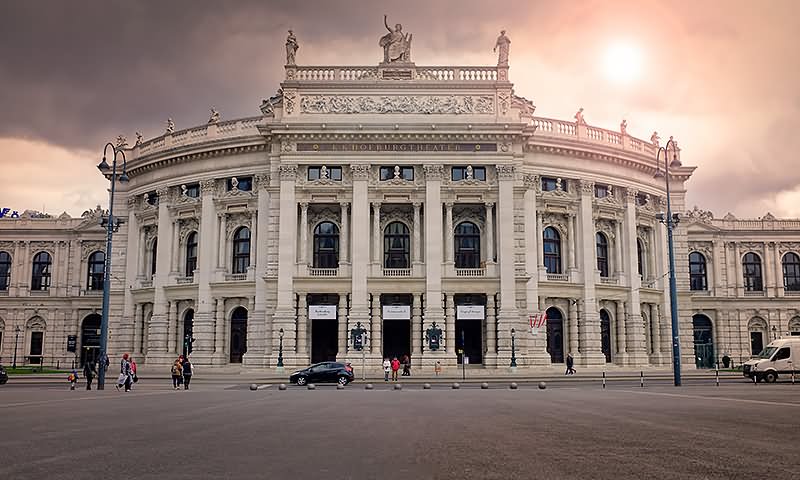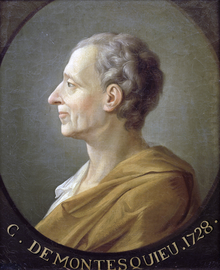= the musical idiom hailed by the Enlightenment had its roots in vocal music where direct, natural expression was especially appropriate
= traits typical of classical era music originated in Italian opera (beginning 1720s 1730s)
= a key development was the emergence of separate traditions of comic and serious opera around 1700
= national styles of comic opera emerged in France, England, German-speaking lands
ITALIAN COMIC OPERA
= cultivated throughout Italy by 1690s and spread widely in the 18th century
= renewed interest in the views of drama found in Aristotle and classical writers led librettists to eliminate comic elements from serious opera (see previous blog entry for more information on serious and comic opera/opera buffa)
= opera buffa (comic opera)
= a full-length work with 6 or more singing characters and was sung throughout
= plots centered on ordinary people in the present day (contrast to myth or history in serious opera)
= was first staged in public theaters and aimed primarily at middle-class audiences, gradually gaining aristocratic patrons
= “stock characters” like aristocrats, commoners, vain ladies, miserly old men, awkward and clever servants, deceitful husbands and wives, etc similar to the commedia dell’arte (improvised comedy popular in Italy since 16th century)
= arias in comic operas/buffa are typically in galant style
= intermezzo
= another type of Italian comic opera
= performed in 2 or 3 segments between acts of a serious opera or play
= this genre originated in Naples and Venice ~1700
= comic characters were given their separate story in the intermezzo
= plots usually presented 2 or 3 people in comic situations and actions proceeded in alternating recitatives and arias (like in serious opera)
= later comic opera
= Italian comic opera changed considerably in 18th century
= midcentury: serious, sentimental plots appeared alongside traditional comic onces
= another development was the ensemble finale: at the end of the act, all characters were gradually brought on stage while the action continued until it reached a climax with all singers (the characters) taking part. it was unlike anything in serious opera
= the periodic phrasing, tuneful melodies, simple harmonies, spare accompaniment, direct expression, emotional fluidity, strong stylistic contrasts, mixture of elements characterized Italian opera and became central elements of the international idiom of the later 18th century
OPERA SERIA (serious opera)
= opera seria received its standard form from Italian poet Pietro Metastasio. his dramas were set to music hundreds of times by many 18th century composers
= an opera seria’s 3 acts consist (almost always) of alternating recitatives and arias (more info on recitatives and arias on previous blog entry)
= the aria
= the favored form in the first half of 18th century remained the da capo aria (ABA scheme)
OPERA in OTHER LANGUAGES
= comic opera took different forms in different countries
= it usually represented people from the middle or lower classes in familiar situations
= comic-opera librettos were always written in the national tongue, and the music tended to national musical idioms
= it grew steadily in importance after 1750 and before the end of the century many of its characteristic features had been absorbed into the mainstream operatic composition
= it reflected the widespread demand for simple, clear, “natural” singing
= it encouraged the growth of separate national traditions of opera, which became prominent in the Romantic period
= France
= opera comique
= the native French version of opera with spoken dialogue that began around 1710
= the music consisted almost entirely of vaudevilles (popular tunes or simple melodies imitating popular tunes) until midcentury
= in the 1750s, the presence of Italian comic opera stimulated the production of opera comiques in which original airs/ariettes in a mixed Italian-French style were introduced
= the vaudevilles were gradually replaced by the ariettes until the end of 1760s when all music in an opera comique was freshly composed
= used spoken dialogue instead of recitatives (just like all variants of the comic opera except the Italian)
= remained extremely popular in France throughout the Revolution and the Napolenionic era and into the 19th century
= serious plots
= by later 18th century, librettists and composers of opera comique were using serious plots
= based on social issues that agitated France and during the years of the Revolution
= England
= ballad opera
= in England, the popular form of opera in the local language was ballad opera
= consisted of spoken dialogue interspersed with songs, setting words to borrowed tunes (folk song, dances, popular songs, airs, arias)
= peaked in 1730s, but continued to be composed and staged in Britain and its North American colonies, and later the United States
= over time, composers borrowed less and wrote more original music (similar to the development of France’s opera comique)
= Germany and Austria
= Singspiel
= much more popular than serious opera was the new genre called Singspiel
= (German: “singing play”), an opera with spoken dialogue, musical numbers, and usually a comic plot
= many Singspiel tunes were published in German song collections and some achieved lasting popularity that they virtually became folksongs
= in northern Germany, the Singspiel eventually merged with early 19th century native opera
= in the South (particularly Vienna), farcical/nonsensical subjects became popular, with lively music influenced by Italian comic opera
= Opera and the Public
= each of these national traditions of comic opera was at first primarily supported by the public than depending on patrons
= each tradition developed unique features based on what pleases the audiences in that region, encouraging distinct national styles (which became one of the strongest trends in 19th century)
= the increasing importance of middle-class public for music became the economic force behind the changes in musical style and the growth of new genres in late 18th century and throughout 19th century
= public support also reinforced preference for music that was simple, clear, direct, had wide appeal (which was also the preference of many Enlightenment intellectuals)
OPERA REFORM
= serious opera remained dependent on royal and aristocratic patronage, but also underwent changes reflecting Enlightenment thought
= mid 18th century, composers, librettist, patrons worked to bring opera into harmony with new ideas of music and drama, seeking to make the entire design more “natural” — flexible structure, more expressive, less ornamented with coloratura, more varied
= they modified da capo aria and introduced other forms
= they alternated recitatives and arias more flexibly
= to increase dramatic impact, they made greater use of accompanied recitative and ensembles, making the orchestra more important as a vehicle for depicting scenes, evoking moods
= 2 of the most important figures in this reform: Noccolo Jommelli and Tommaso Traetta
= these Italian composers worked at courts where French taste predominated and naturally influenced them toward a cosmopolitan type of opera
= Jommelli blended Italian melody and French declamatory recitative
= Traetta similarly aimed to combine the best of French tragedie and Italian opera seria
= CHRISTOPH WILLIBALD GLUCK (1714-1787)
 |
| Gluck in a 1775 portrait by Joseph Duplessis |
= had a leading role in liverating opera from the conventions of opera seria, and creating a new operatic style based on truly dramatic expression
= he achieved a winning synthesis of French, Italian, German operatic styles
= explaining the aims behind the movement for operatic reform: “…Furthermore, I believe that my greatest labor should be devoted to seeking a beautiful simplicity…”
= he aspired to write music of “a beautiful simplicity” which he achieved in Orfeo ed Euridice (1762)
= the music is molded to the drama with recitatives, arias, choruses intermingled in large unified scenes
= Gluck’s operas became models for many subsequent works especially in Paris
= his influence on the form and spirit of opera was transmitted to the 19th century through other composers
= naturalistic singing and acting
= Gluck supervised the production of his operas, enhancing drama with more naturalistic lighting, staging, acting
 |
| Burgtheatre in Vienna where Orfeo and Euridice was first performed on 5 October 1762. Restored after a fire in 1945. |
SONG
= songs for home performance were composed and published in many nations
= increasingly, the accompaniment was written for a keyboard instrument, although guitar was used
= most songs simple, syllabic, diatonic, strophic, with accompaniments easy enough to be played by the singer
= many sonds sung at home were religious and hymnlike
= in France
= the romance was a strophic song on a sentimental text with simple, expressive melody
= in Britain
= ballads were printed in large sheets (called broadsides) or gathered in printed collections
| broadside (poster) for performance of Handel's Messiah, Boston, 1860 |
= usually only text (typically poem, about recent events or a sentimental theme) was printed and meant to be sung to a familiar tune
= in Germany
= the German song, or Lied, achieved a special prominence
= German writers insisted that song should be simple and expressive
= lyric poems were strophic
= songs were considered best when the melody was easy to sing even by those untrained in music
= accompaniment was subordinate to the vocal line
= this modest style was meant to please those who performed and heard it, not to impress or astound as did the vocal display of opera
= although songs of 18th century are little known today, they embody values of the Enlightenment
= song became a critically important genre in the 19th century
CHURCH MUSIC
= once the driving force in the development of new styles, mid-18th century church music was valued more for its traditionalism than for innovations
= catholic music
= church composers conformed to the prevailing secular style (especially theatre)
= lutheran music
= in Lutheran areas with the Enlightenment's focus on reason led to drastic changes in church music
= the cantata and alaborate choral-based compositions were not considered old-fashioned
= music for the service consisted primarily of congregational hymns composed or adapted in galant style
= the non-liturgical genre of oratorio became the principal medium for North German composers (the best known was the Passion oratorio: Der Tod Jesu/The Death of Jesus, 1755 by Carl Heinrich Graun, which remained popular in Germany until the end of 19th century)
Der Tod Jesu
= english church music
= in England, the enormous influence of Handel and the interesi in older music kept Baroque styles of church music alive (anglican music, the service and anthem, hymns for church)
= new world
= church musicians in European settlements in the New World drew on their respective national styles
= Spanish colonies: villancicos
= British North America: anglican churches in large cities featuring organs, choirs of men and boys
OPERA and the NEW LANGUAGE
= the urge to entertain and to reach a diverse audience led to a simplification of means and a striving for more effective “naturalistic” expression
= from Italian theatres the new styles spread through the cosmopolitan network of musicians, composers, and directors to other regions
= seeking to serve the growing taste for a clear and universally appealing music, composers developed musical ideas that could be grasped on first hearing
= most vocal music of the time quickly passed from the stage and is now little known (although La Serva Padrona, The Beggar’s Opera, Orfeo ed Euridice are still well known/"a permanent fixture)
= the music of the 18th century is often seen as transitional (because of how Bach and Handel are seen as the Baroque, and Haydn and Mozart being masters of the classical style), but much of 18th century music is actually beautiful and deserves attention in its own merits
= it was great importance to its performance and listeners, evident from the writings and discussions on music by everyone (amateur or professional musicians, merchants, monarchs, etc)


